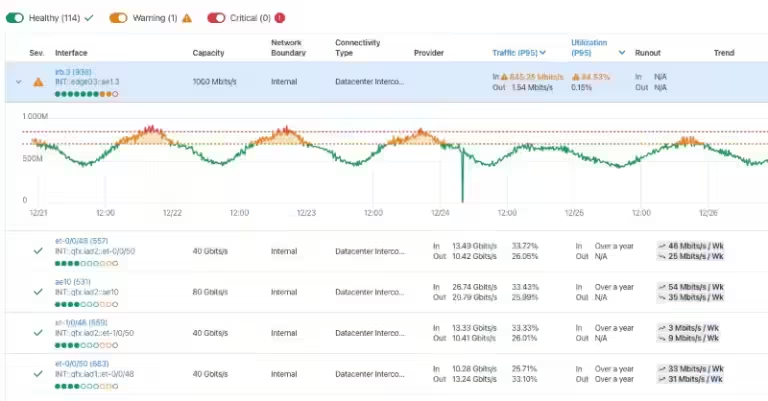The Right Network Capacity: A Guide for Businesses

In the digital age, a reliable and robust network is no longer a luxury; it's a necessity. Imagine your business coming to a standstill because your network can't handle the demand. Customers are frustrated, employees can't work, and your bottom line suffers. This is why determining the right network capacity for your business is crucial. It's not just about having enough bandwidth, but about optimizing performance and ensuring you can handle future growth.
But how do you figure out the right capacity? There's no one-size-fits-all answer. It depends on a number of factors, including the size of your business, the types of applications you use, and your anticipated growth. Let's delve into the key considerations to help you make an informed decision.
Understanding Network Capacity
Network capacity refers to the maximum amount of data that your network can transmit or handle at any given time. It's like a highway with multiple lanes – the more lanes you have, the more cars can travel simultaneously. In the world of networks, bandwidth is often used interchangeably with capacity, representing the data transfer rate over a certain period.
Imagine a small startup with a few employees using basic email and web browsing. They might get away with a modest network capacity. However, a large enterprise with hundreds of employees, demanding applications, and video conferencing needs significantly more capacity to function efficiently.
Factors to Consider When Determining Network Capacity
1. Number of Users and Devices
The more users and devices connected to your network, the higher the demand on your network capacity. Each user and device generates traffic, whether it's sending emails, accessing files, streaming videos, or conducting video calls. A business with 100 employees will naturally require more capacity than one with 10 employees.
2. Types of Applications
Certain applications are bandwidth-intensive, meaning they consume a lot of network capacity. Streaming video conferencing, online gaming, and large file transfers require significant bandwidth. On the other hand, simple tasks like email and web browsing are less demanding. Evaluate the applications used in your business and their bandwidth requirements.
3. Data Usage Patterns
Data usage isn't consistent throughout the day. There are peak hours when network traffic is high, such as during business hours or when employees are actively using applications. Consider the typical data usage patterns in your business and ensure your network can handle the peak demand.
4. Future Growth Projections
It's crucial to consider your business's future growth plans. Will your workforce expand? Will you adopt new technologies or implement new applications? Plan for future needs to avoid bottlenecks and ensure your network can scale with your business.
Strategies for Optimizing Network Capacity
1. Network Monitoring and Analysis
Regularly monitor your network performance to identify bottlenecks and areas where capacity is being strained. Network monitoring tools can provide valuable insights into traffic patterns, application usage, and potential issues. Analyze this data to identify areas for optimization.
2. Network Segmentation
Segment your network into different areas, such as guest Wi-Fi, employee network, and critical systems. This allows you to prioritize traffic and allocate resources more effectively. For example, you can prioritize critical systems like servers over guest Wi-Fi, ensuring they receive the necessary bandwidth.
3. Quality of Service (QoS)
QoS is a mechanism that prioritizes certain types of traffic over others. It allows you to allocate bandwidth based on the importance of the application or user. For example, you can prioritize video conferencing over web browsing, ensuring smooth and uninterrupted calls.
4. Cloud-Based Solutions
Consider leveraging cloud-based solutions, such as cloud storage and cloud computing, to reduce the load on your internal network. By shifting data and processing power to the cloud, you can free up valuable network capacity for other critical tasks.
Determining the right network capacity for your business is essential for smooth operations and future growth. By considering factors such as user count, applications, data usage patterns, and future projections, you can make an informed decision about the appropriate network capacity for your needs. Remember to monitor your network regularly, optimize performance, and leverage strategies like network segmentation and QoS to ensure your business can thrive in the digital landscape.
Frequently Asked Questions about Network Capacity
How much network capacity should my business maintain?
There is no one-size-fits-all answer to this question, as the ideal network capacity depends on various factors like the size of your business, the number of employees, the types of applications and services used, and the expected growth. The general rule of thumb is to have enough capacity to handle current needs and anticipate future growth.
What happens if my network capacity is too low?
If your network capacity is insufficient, you may experience slow internet speeds, laggy applications, and frequent disconnections. This can affect employee productivity, customer satisfaction, and overall business operations.
What happens if my network capacity is too high?
While having excess network capacity may seem like a good thing, it can lead to unnecessary costs for unused bandwidth. It is important to strike a balance between having enough capacity and avoiding overspending.
How can I determine the right network capacity for my business?
To determine the right network capacity, you can consult with a network engineer or IT expert. They can assess your current needs, anticipate future growth, and recommend the best network configuration.
What are some factors to consider when determining network capacity?
Factors to consider include:
- Number of employees: More employees mean higher bandwidth usage.
- Applications and services: Data-intensive applications like video conferencing and cloud storage require more bandwidth.
- Peak usage times: Network traffic may be higher during certain times of the day, such as during business hours or specific events.
- Future growth: Anticipate potential increases in employee count or application usage.
How can I monitor my network capacity?
Network monitoring tools can help you track bandwidth usage, identify bottlenecks, and ensure your network is performing efficiently.
What are some tips for optimizing network capacity?
- Prioritize traffic: Use Quality of Service (QoS) settings to prioritize critical applications.
- Implement network segmentation: Separate sensitive data and applications from public networks.
- Optimize network devices: Ensure your routers, switches, and firewalls are properly configured.
- Regularly review network usage: Monitor bandwidth usage and adjust capacity as needed.
It's important to remember that network capacity is a crucial aspect of business operations. By understanding the factors involved and taking appropriate measures, businesses can ensure their network is adequately equipped to support their current and future needs.








